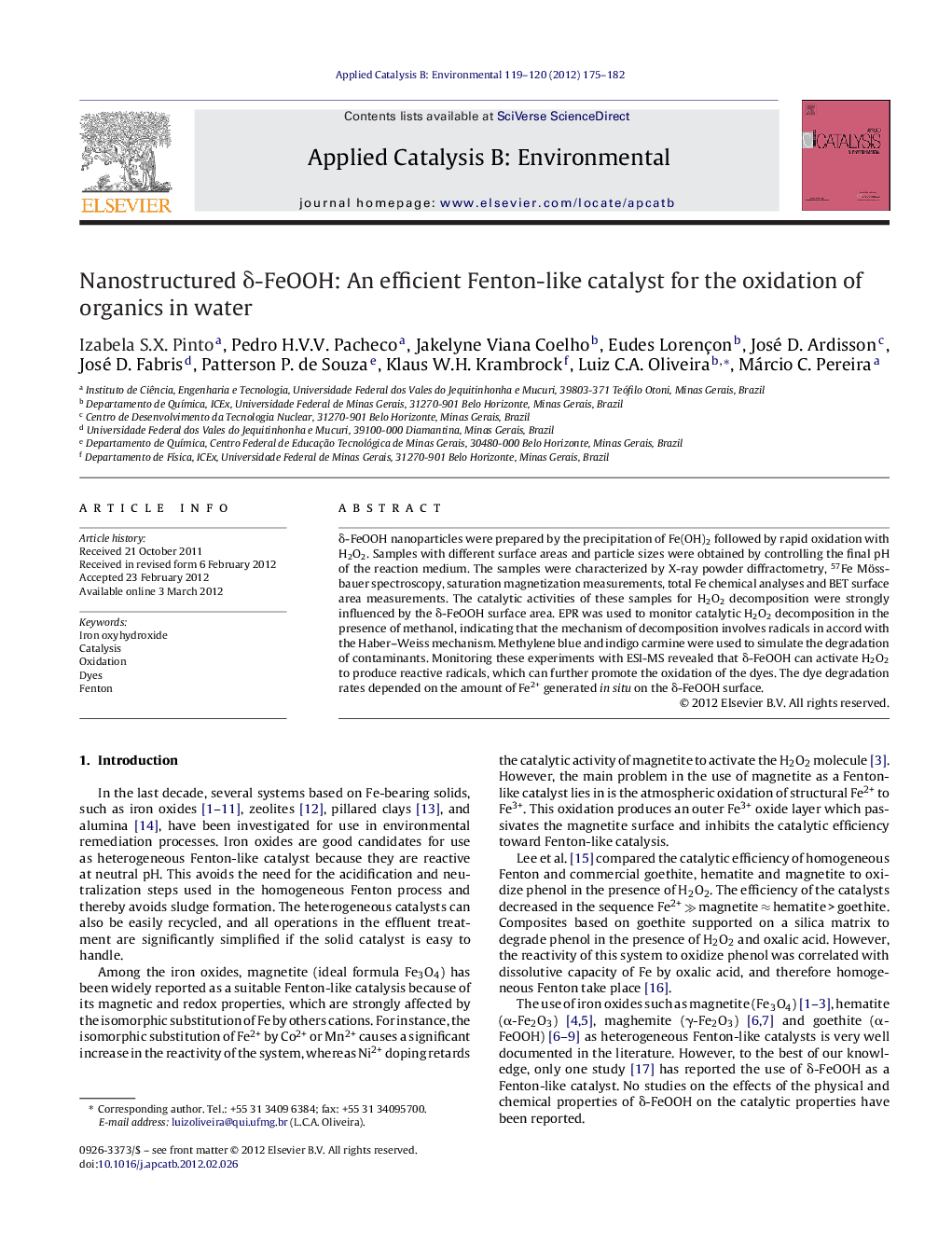| Article ID | Journal | Published Year | Pages | File Type |
|---|---|---|---|---|
| 46650 | Applied Catalysis B: Environmental | 2012 | 8 Pages |
δ-FeOOH nanoparticles were prepared by the precipitation of Fe(OH)2 followed by rapid oxidation with H2O2. Samples with different surface areas and particle sizes were obtained by controlling the final pH of the reaction medium. The samples were characterized by X-ray powder diffractometry, 57Fe Mössbauer spectroscopy, saturation magnetization measurements, total Fe chemical analyses and BET surface area measurements. The catalytic activities of these samples for H2O2 decomposition were strongly influenced by the δ-FeOOH surface area. EPR was used to monitor catalytic H2O2 decomposition in the presence of methanol, indicating that the mechanism of decomposition involves radicals in accord with the Haber–Weiss mechanism. Methylene blue and indigo carmine were used to simulate the degradation of contaminants. Monitoring these experiments with ESI-MS revealed that δ-FeOOH can activate H2O2 to produce reactive radicals, which can further promote the oxidation of the dyes. The dye degradation rates depended on the amount of Fe2+ generated in situ on the δ-FeOOH surface.
Graphical abstractFigure optionsDownload full-size imageDownload as PowerPoint slideHighlights► δ-FeOOH with different surface areas and mesoporous structure is easily prepared. ► δ-FeOOH can activate H2O2 to produce highly reactive radical species. ► δ-FeOOH is efficient to promote oxidation of organics in the presence of H2O2.
